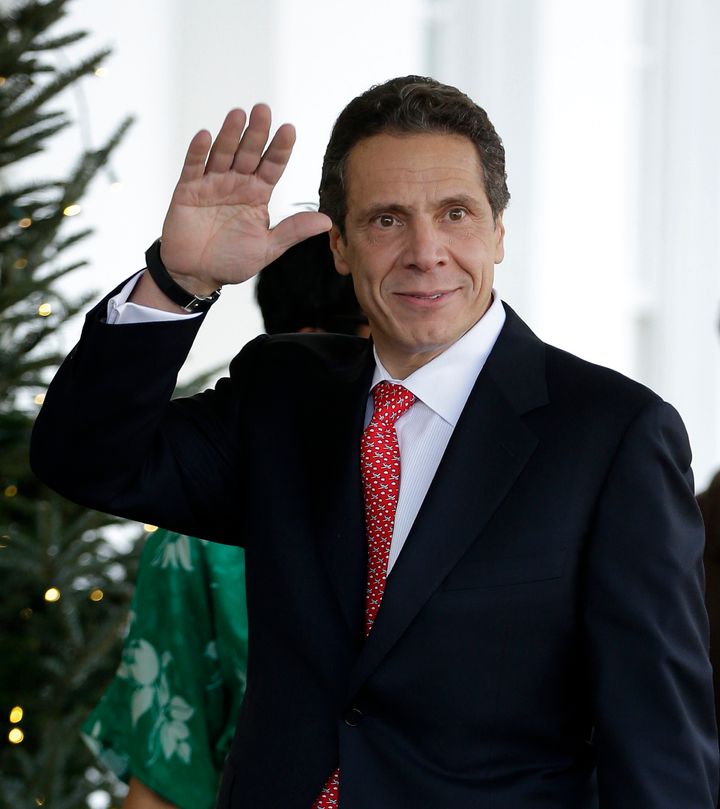
Governor Andrew Cuomo and the New York State Legislature have successfully tackled serious budget issues in recent years, but important challenges remain. These must be addressed in his next budget in order to improve the state's fiscal condition and give local governments better tools to manage their structural deficits.
Over the last two years New York State has notably curbed rapidly rising public employee pension costs, negotiated reasonable contracts for the state workforce, and implemented significant reforms in Medicaid. These actions helped improve the state's fiscal condition to the extent that the projected budget gap in fiscal year 2013-14 is a historically low $982 million. Yet four important challenges face state leaders as they prepare the next budget:
1. Reform the State Aid Formulas for School Districts.
Education aid is the largest item in the state budget: $20.1 billion in the current year. Governor Cuomo formed the New NY Education Reform Commission in June 2012 with a mandate that includes an examination of education funding, distribution and costs. Preliminary recommendations from the Commission are expected soon, but if they are silent on the question of how to reform the state aid formulas the Governor and Legislature should still act this year.
According to an agreement adopted with the last state budget, education aid will grow at the same rate as state personal income, or more than $1.5 billion over the next two years. But there are significant inequities in the way that current formulas distribute this aid. Districts that are relatively similar in student need and ability to pay receive aid allocations that vary according to patterns established decades ago and kept in place by "hold harmless" provisions.
Additional sources of funding -- "high tax" and "bullet" aid -- sweeten the results for important political constituencies. Overly generous expense-based aid formulas for pupil transportation and the construction of school facilities fuel growth that cuts into the basic amount available to meet other educational needs. Instead of putting more money in the hands of school districts through the same seriously flawed methods, state leaders should redesign the school aid formulas.
2. Extend the Global Cap on Medicaid.
Medicaid is the second-largest item in the state budget: $15.9 billion in the current year. In August 2012, New York applied for a federal waiver to reinvest $10 billion of the estimated $17 billion in federal savings expected from the work of the Medicaid Redesign Team (MRT) over the next five years. The waiver application assures the federal government that New York will achieve the promised savings either through more cost-effective care for patients or through the global cap that allows the Commissioner of Health to withhold funds if spending exceeds an amount set in statute.
The cap has proven effective, even in the face of continued growth in enrollment and health care inflation. In the first nine months after the first MRT proposals were implemented in April 2011, year-to-year Medicaid spending growth was contained to 2 percent, while the number of beneficiaries rose 4 percent. To help assure realization of the waiver application's savings projections, and improve the state's prospects of bending the Medicaid cost curve over the long run, the Legislature and the governor should extend the Medicaid growth cap for at least five years.
3. Provide Local Government Relief.
Fiscal pressures on local governments and school districts are mounting. The Great Recession caused a dramatic drop in state revenues and shrunk local tax collections and expectations for state aid. Local property tax increases that might make up some of the difference are now limited by the 2 percent growth cap enacted in 2011. Some localities in the poorest fiscal shape are likely to ask the Legislature, as they did last year, to approve ill-advised borrowing schemes to try to close their deficits. But what local governments need from state leaders isn't an OK to go deeper in debt; they need relief from state-imposed mandates that burden them with unnecessary expenses.
Last year the counties were relieved of a small share of the unfair burden of financing the Medicaid program, although more should be done in the long run to shift the entire burden to the state. Some of the proposals from the Governor's Mandate Relief Redesign Team were enacted, but additional ideas worth an estimated $245 million in annual savings were left on the table. And school districts need relief from overly burdensome special education mandates. New York imposes 227 mandates beyond those required by federal law, contributing to a system of special education that is one of the most intensively staffed in the nation. Overall New York employs nearly two times as many professionals per special education pupil as the national norm--the student-to-staff ratio in New York is 5.5 compared to the U.S. average of 10.1. The Board of Regents has approved a number of reforms and forwarded them to the state Legislature for adoption, where there has been no action. Mandate relief needs to be given renewed priority by Governor Cuomo who should press for adoption of the pending proposals in the fiscal year 2013-14 budget.
4. Freeze Economic Development Spending Until Better Accountability Tools Are Fully Implemented
In the last two budgets, the governor and Legislature authorized $365 million in new capital grants allocated through the Regional Economic Development Councils. Although the Councils have improved the effectiveness of the spending under their purview, they control only a fraction of the $7 billion that the state and its local governments spend on economic development each year. This tally includes $2.6 billion in credits and exemptions that reduce state taxes that have largely escaped scrutiny throughout the recession. No additional funds should be authorized for economic development programs until a thorough review of all of them has been conducted to assess whether they are working and until the results of the new performance metrics put in place by the Regional Councils can be evaluated.
Hurricane Sandy left many uncertainties in her wake, not the least of which is how much of the cost of rebuilding will be borne by the federal government. But even before the storm, state tax collection projections for the year were uncertain; monthly receipts fell below the financial plan target in every month from March through September. The governor and legislative leaders should adopt a budget that addresses the above priorities in order to consolidate the gains they have made toward fiscal stability for New York and to enable us to weather the uncertainties ahead.
The author is president of the Citizens Budget Commission (www.cbcny.org).
